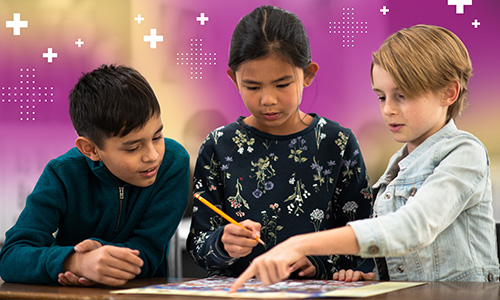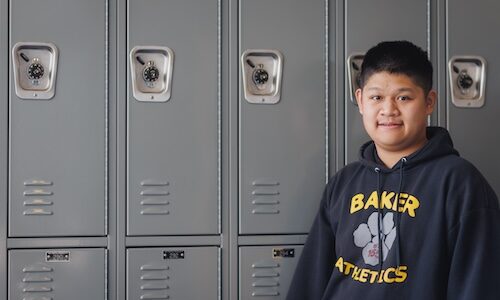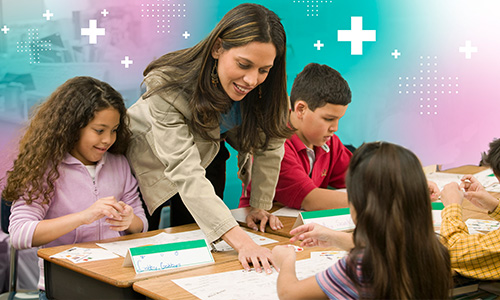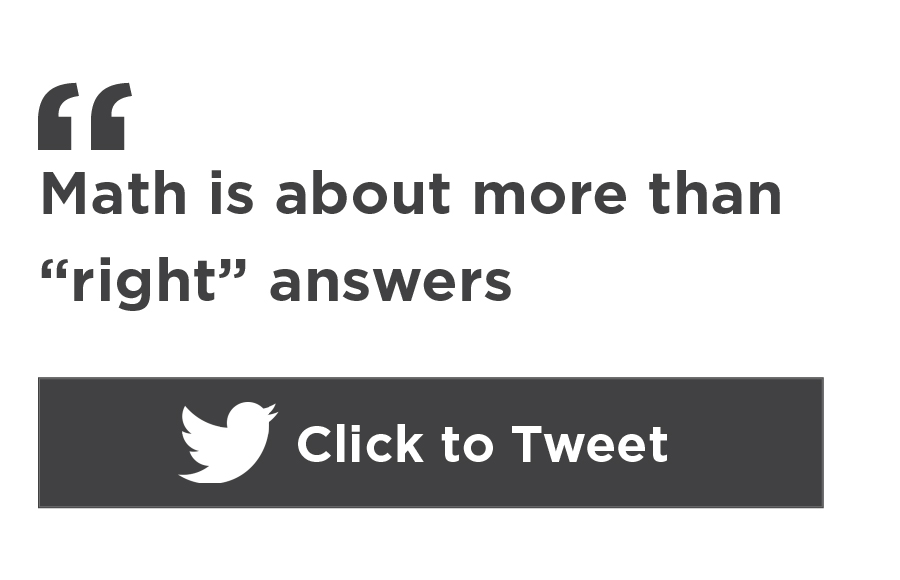
Everyone makes mistakes. It’s inevitable. But it often triggers feelings of guilt or shame, which can be difficult, especially if we struggle to embrace our mistakes.
Learning mathematics can be extra challenging due to the pressure of having to come up with the “right” answer. It is quite easy to develop a fixed mindset when it comes to learning math—“I either have it or I don’t”—and a student with a fixed mindset views learning math as an innate gift rather than problem solving and reasoning skills that are developed over time. Here’s just a small sampling of the kinds of lies students (and adults!) may tell themselves, lies that get in their way of learning math:
- “I just can’t do this and will never be able to.”
- “Making mistakes means I am (insert self-deprecating name calling here).”
- “Making mistakes means I am not a math person.”
- “I’ll be humiliated if I make a mistake in math class.”
To shift our students’ perception of making mistakes in mathematics, we need to help them see the truths.
Truth #1: Making mistakes is an inevitable part of learning
It’s critical to tell kids—early and often—that making mistakes is normal whenever we’re learning anything new, no matter how old we are. If your students got everything right in your math class on the first try, would they truly be learning anything? Or would it just be proof that they needed to be in a more advanced class? Remind them that learning is usually filled with twists and turns, and don’t be afraid to share stories about your own learning journey, especially with something they might find easy and familiar, like playing Minecraft. Zeroing in on something that’s simple for them will humanize you and prove that there’s a learning curve to everything.
Learning mathematics can be extra challenging due to the pressure of having to come up with the ‘right’ answer.
Another important idea for your students to understand is that it is very rare that everything in their mathematical process is wrong. Student work reflects student thinking, so instead of just telling them they are wrong, work with them to help them better understand their thinking. Together you can construct stronger connections to the content you’re teaching. Reassure your students that not only is making mistakes OK, but it also allows them to understand that learning math is an ongoing balance on the edge of productive struggle. Providing this specific feedback quickly is critical to student growth, so be sure to work frequent feedback into your practice. Students need to hear from you while the work they’ve completed is fresh on their minds so they can remember their thinking as well as your lesson and better connect the dots.
Truth #2: Making mistakes means I am learning and growing
One of the most common things I hear from students and adults is that they were never a “math person.” Many math teachers seem to agree, saying things like, “My students can’t do this.” That kind of thinking leads to little learning and a lot of broken spirits.
The reality is that learning math is challenging and, as with all difficult things, making mistakes is part of the process. For students to learn from them, instead of shut down, they need your support. Teach them that mistakes are just a sign that they’re learning and growing and that each and every one they make is a chance to rethink the math in front of them and work on understanding it fully. It can be useful, once again, to share personal experiences of your own growth in math or other areas. Or ask them to consider proof that famous mathematicians had plenty of trial and error of their own.
Another useful practice is goal setting. Spend time with each student helping them understand where they are in their learning and what they are working toward. This can help them understand that there’s a meaning to everything they tackle in class, and it helps them see their progress over time, too.
Focusing on growth in these ways helps students improve in their self-assessment, mathematical thinking, and disposition toward learning mathematics.
Truth #3: Making mistakes requires safety
The first two truths were, arguably, more about challenging the lies students tell themselves. This one is more about encouraging you to build a classroom environment where students can begin to believe in their math ability. Creating a culture of learning depends on educators and how we approach learning mathematics.
[An] important idea for your students to understand is that it is very rare that everything in their mathematical process is wrong.
Sharing your own learning journey and stories of your own mistake making, like I mentioned earlier, is a valuable way to create a safe learning environment. Another way is to rethink your grading practices. Lies about math learning can be perpetuated when teachers put a value, like a grade, on student work while kids are still in the process of learning. An example is scoring formative assessments, which should never be graded. Being penalized for practice in this way reinforces negative aspects of a student’s math identity, which can trigger shame and cue fear or just giving up. Consequentially, students may be unwilling to take more risks in the future. This is learning trauma. But if we can shift our own perceptions of mistakes as something to embrace rather than to avoid, then students will eventually learn to accept that mistakes are not just OK, but expected. It can be difficult to transition to alternative grading practices, but even small changes to how you grade can make a big difference for students and their learning.
A safe learning environment also allows for students to take risks in discussions and their work. It creates opportunities for honest conversations during whole- and small-group work as well as opportunities for self-reflection during and at the end of each lesson. Encourage your students to explain their thinking, rather than focus on the “right” answer, so they can learn to understand that the process is as critical a part as arriving at the answer. When judgment is removed from mistake making in this way, student conversations will flourish. Learning will become enriched by a community of support, and students become allies in learning with each other—and with you. If you need ideas on how to get started, try the following:
- Check out 5 Practices for Orchestrating Productive Mathematics Discussions for ideas on encouraging deeper student discourse.
- Use My Favorite No. With this instructional strategy, students work on a warm-up problem, then you collect their anonymous work and choose your favorite incorrect solution to talk through with the class. The anonymity creates safety for students, and the group discussion allows them to support one another by discovering and correcting mistakes.
- Try error analysis. When I taught middle school math, my approach to error analysis was to pair my students up. They would redirect each other by clearly identifying a mistake that had been made and then writing out the correct steps and reasoning. I would also include at least one error analysis problem on each summative assessment to help students develop their justification skills.
Closing thoughts
I encourage you to reflect on your approach to teaching mathematics. What does it mean to you to learn math? Are there changes you can make in your practice to support mistake making?
As you try the tips listed here, note the changes in your classroom environment and how your students view themselves as math learners. Remind yourself that you may make mistakes in your instruction and that’s OK. A bad lesson does not mean you are a bad teacher. It’s an opportunity for you to learn and grow as an educator. At the end of the day, we are not all that different from our students.








